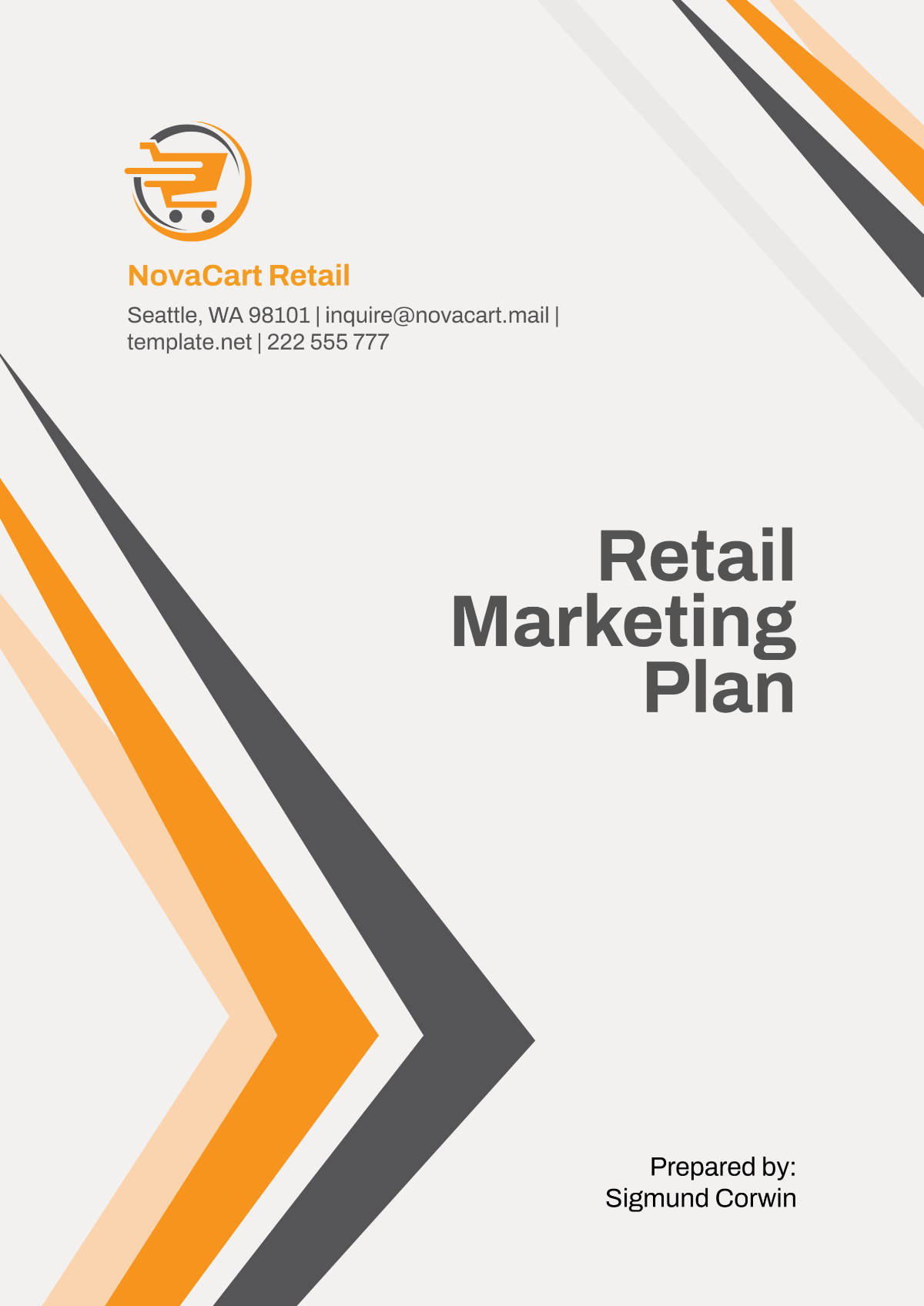Marketing Cost Management Strategies
Executive Summary
At [Your Company Name], we recognize the paramount importance of effective marketing cost management. In an increasingly competitive business landscape, where every marketing dollar counts, it's crucial to optimize marketing expenditures while simultaneously striving to maximize the return on investment (ROI). This template has been meticulously crafted to offer a comprehensive guide to achieving these objectives.
Within the subsequent sections of this document, we will delve into the intricacies of our approach, providing actionable insights, data-driven analyses, and practical recommendations to help your organization harness the power of effective marketing cost management. From understanding how to allocate your marketing budget wisely to analyzing and reducing costs, calculating ROI, optimizing efficiency, and monitoring performance, this template encompasses a comprehensive spectrum of strategies and tools.
Introduction
In today's business environment, marketing plays a pivotal role in shaping brand identity, attracting customers, and driving revenue. However, the effectiveness of marketing efforts is intrinsically tied to the efficient utilization of resources, particularly financial ones. This is where the concept of marketing cost management becomes paramount.
Effective marketing cost management is not merely about minimizing expenses; it is about optimizing the allocation of resources to achieve strategic marketing objectives while maintaining financial prudence. At [Your Company Name], we understand that achieving this balance is essential to ensure that marketing investments yield the desired results without exceeding budgetary constraints.
Objective
The core objective of this document is to provide organizations with a comprehensive blueprint for achieving effective marketing cost management. We recognize that every business is unique, and there is no one-size-fits-all approach to cost management. Hence, this template encompasses a flexible framework that can be tailored to suit the specific needs and goals of your organization.
Marketing Budget Allocation
A. Budget Allocation Strategies
We explore the intricate art of allocating your marketing budget effectively. The allocation of resources across various marketing channels and initiatives is a critical decision that can significantly impact your overall marketing success.
Market Research and Analysis
One of the foundational pillars of effective budget allocation is thorough market research and analysis. Understanding your target audience, their preferences, and market trends is paramount. Through comprehensive market research, you can identify emerging opportunities, competitive threats, and consumer behavior patterns that inform your budget allocation decisions.
Competitive Analysis
Competitive analysis is another crucial element in shaping your budget allocation strategy. It involves evaluating your competitors' marketing efforts, identifying their strengths and weaknesses, and determining where your brand can gain a competitive edge. By strategically allocating resources in areas where competitors are less active or less effective, you can maximize your ROI.
Goal Setting
Effective budget allocation starts with clear and measurable goals. What do you want to achieve with your marketing campaigns? Are you focused on brand awareness, lead generation, or sales conversions? Setting specific goals allows you to allocate resources with precision, ensuring that each dollar spent contributes to your desired outcomes.
Cost Reduction Strategies
A. Cost Analysis
Cost analysis is a critical component of efficient marketing cost management. We will dive into the detailed examination of your marketing expenditures to identify areas where cost reductions can be achieved without compromising the quality of your campaigns.
Advertising Costs
Advertising is often a significant portion of the marketing budget. By identifying which campaigns deliver the highest ROI and which may require optimization, you can allocate resources more effectively.
Personnel Expenses
Personnel expenses can account for a substantial part of your marketing budget. Here, we explore strategies to optimize human resource allocation, potentially reducing overhead while maintaining or even enhancing marketing effectiveness. This may involve reevaluating roles, outsourcing specific tasks, or implementing automation tools.
Technology and Tools Costs
Modern marketing relies heavily on technology and tools. We provide an in-depth analysis of the software and technologies used in your marketing efforts. We need to identify redundant tools, inefficient processes, or opportunities to leverage cost-effective alternatives without sacrificing productivity.
Miscellaneous Expenses
Marketing often incurs miscellaneous expenses that can add up quickly. We encourage a comprehensive review of all miscellaneous expenses, such as travel, events, and promotional materials. By scrutinizing these costs, you can uncover opportunities to reduce expenditures while maintaining marketing effectiveness.
B. Cost Reduction Plan
Having analyzed your marketing costs, it's time to create a structured cost reduction plan. This plan outlines actionable steps to optimize your marketing expenditures without compromising the quality or impact of your campaigns. It takes into account the findings from the cost analysis and offers a roadmap to achieve cost savings.
Return on Investment (ROI) Analysis
A. ROI Calculation
We demystify the process of calculating Return on Investment (ROI) for your marketing campaigns. ROI is the ultimate metric that assesses the success and efficiency of your marketing efforts. A comprehensive understanding of ROI is essential for making data-driven decisions and optimizing your marketing budget allocation.
Revenue Tracking
Effective ROI calculation begins with meticulous revenue tracking. This involves capturing every source of revenue generated as a result of your marketing activities. From sales generated through online advertising to revenue from email marketing campaigns, tracking revenue from each channel and campaign is essential.
Expense Tracking
Equally critical is the tracking of expenses associated with your marketing campaigns. This includes advertising costs, personnel expenses, technology expenses, and any other costs incurred during marketing activities. Accurate expense tracking is the foundation of precise ROI calculations.
ROI Formula
We provide a clear and concise explanation of the ROI formula, making it accessible even to those without a background in finance. The formula compares the net profit generated from a marketing campaign or channel against the total costs incurred. It's a straightforward yet powerful tool for assessing the efficiency of your marketing investments.
Marketing Efficiency Optimization
A. Efficiency Metrics
Efficiency metrics are the compass by which you navigate your marketing strategy. We will introduce and explain key efficiency metrics that are instrumental in gauging the effectiveness of your marketing efforts. These metrics provide insights into the efficiency of your marketing campaigns and help identify areas for improvement.
Customer Acquisition Cost (CAC)
CAC measures how much it costs to acquire a new customer through your marketing efforts. This metric is vital for understanding the sustainability of your customer acquisition strategies. We provide a comprehensive breakdown of how to calculate CAC and how to interpret the results.
Customer Lifetime Value (CLV)
Understanding the lifetime value of your customers is crucial for long-term success. CLV quantifies the revenue a customer is expected to generate throughout their engagement with your business. We explain how to calculate CLV and why it's a pivotal metric for decision-making.
Conversion Rate
Conversion rate measures the percentage of website visitors or leads that take a desired action, such as making a purchase or signing up for a newsletter. This metric is an indicator of how well your marketing efforts are driving desired outcomes.
Click-Through Rate (CTR)
CTR is a fundamental metric in digital marketing, particularly for email campaigns and online advertising. It calculates the percentage of people who click on a link or call-to-action within your marketing content. We provide insights into how to optimize CTR for enhanced campaign performance.
B. Optimization Recommendations
Our optimization recommendations encompass a broad spectrum of strategies, from refining your targeting to enhancing your messaging, testing and refining ad creatives, and experimenting with different marketing channels. We emphasize the importance of a data-driven approach to optimization, ensuring that each decision is rooted in measurable results.
Marketing Cost Monitoring
A. Key Performance Indicators (KPIs)
Effective marketing cost management hinges on your ability to monitor and measure key performance indicators (KPIs). These metrics provide real-time insights into the health and efficiency of your marketing initiatives. We will introduce and explain essential KPIs that serve as your compass for navigating the complex landscape of marketing cost monitoring.
Cost Per Lead (CPL)
Cost Per Lead measures the expense incurred for each lead generated through your marketing efforts. It's a critical KPI for assessing the efficiency of your lead generation strategies. By monitoring CPL, you can identify which channels and campaigns are delivering leads at the lowest cost.
Marketing ROI
Marketing ROI is the ultimate metric that quantifies the return on investment for your marketing activities. It compares the net profit generated against the total costs incurred. We provide detailed insights into calculating and interpreting marketing ROI, allowing you to make informed decisions about where to allocate your budget for the best returns.
Cost Per Click (CPC)
CPC measures the cost incurred each time a user clicks on one of your ads or marketing links. This metric is particularly relevant for online advertising campaigns. By tracking CPC, you can optimize your ad spend and improve the cost-efficiency of your advertising efforts.
Cost Per Conversion (CPC)
Cost Per Conversion, also known as Cost Per Action (CPA), quantifies the cost associated with each desired action taken by a user, such as making a purchase, signing up for a newsletter, or filling out a contact form. Monitoring CPC helps you assess the cost-effectiveness of your conversion-focused campaigns.
B. Monitoring Dashboard
A visual dashboard that presents real-time data on the key performance indicators mentioned above. This dashboard provides an at-a-glance view of how your marketing efforts are performing, enabling timely decision-making..
Marketing Risk Mitigation Strategies
Effective marketing cost management not only involves optimizing your budget but also entails identifying and mitigating potential risks that could impact your marketing initiatives. We will explore strategies to proactively manage and mitigate risks associated with marketing expenditures.
A. Risk Assessment
Before implementing your marketing campaigns, it's essential to conduct a thorough risk assessment. This assessment involves identifying potential risks that could affect your marketing initiatives.
B. Contingency Planning
Once you've identified potential risks, it's crucial to develop contingency plans. These plans outline specific actions to take if a risk materializes. Contingency planning allows your organization to respond swiftly and effectively to unforeseen circumstances, minimizing the impact on your marketing budget and objectives.
C. Monitoring and Adaptation
Risk mitigation is an ongoing process. It's vital to regularly monitor your marketing initiatives, assess their performance, and adjust your strategies as needed.
D. Data-Driven Decision-Making
Data is a powerful tool in risk mitigation. By collecting and analyzing relevant data, you can detect early warning signs of potential issues and make informed decisions.
E. Scenario Planning
Scenario planning involves creating multiple hypothetical scenarios and assessing how each would impact your marketing budget and objectives. By exploring various scenarios, you can develop proactive strategies to mitigate risks and capitalize on opportunities that may arise in different circumstances.
F. Stakeholder Communication
Effective communication with stakeholders is crucial in risk mitigation. We will highlight the importance of transparent and timely communication with internal teams, partners, and decision-makers. It ensures that everyone is aware of potential risks and the strategies in place to address them.
G. Post-Campaign Evaluation
After each marketing campaign or initiative, it's essential to conduct a post-campaign evaluation. This evaluation assesses the campaign's performance, identifies any risks that materialized, and evaluates the effectiveness of risk mitigation strategies. The insights gained from these evaluations inform future risk mitigation efforts.
Conclusion
As we conclude this document, it's essential to reiterate that marketing cost management is not a one-time endeavor; it's an ongoing process that requires diligence, data-driven decision-making, and adaptability. The strategies and insights presented in this template are designed to equip your organization with the knowledge and tools necessary to embark on this journey of continuous improvement.
Should you require further guidance, have inquiries, or seek tailored assistance in implementing these strategies, we are here to assist you. Feel free to reach out to our dedicated team at [Your Company Name] by contacting [Your Company Number].

















































